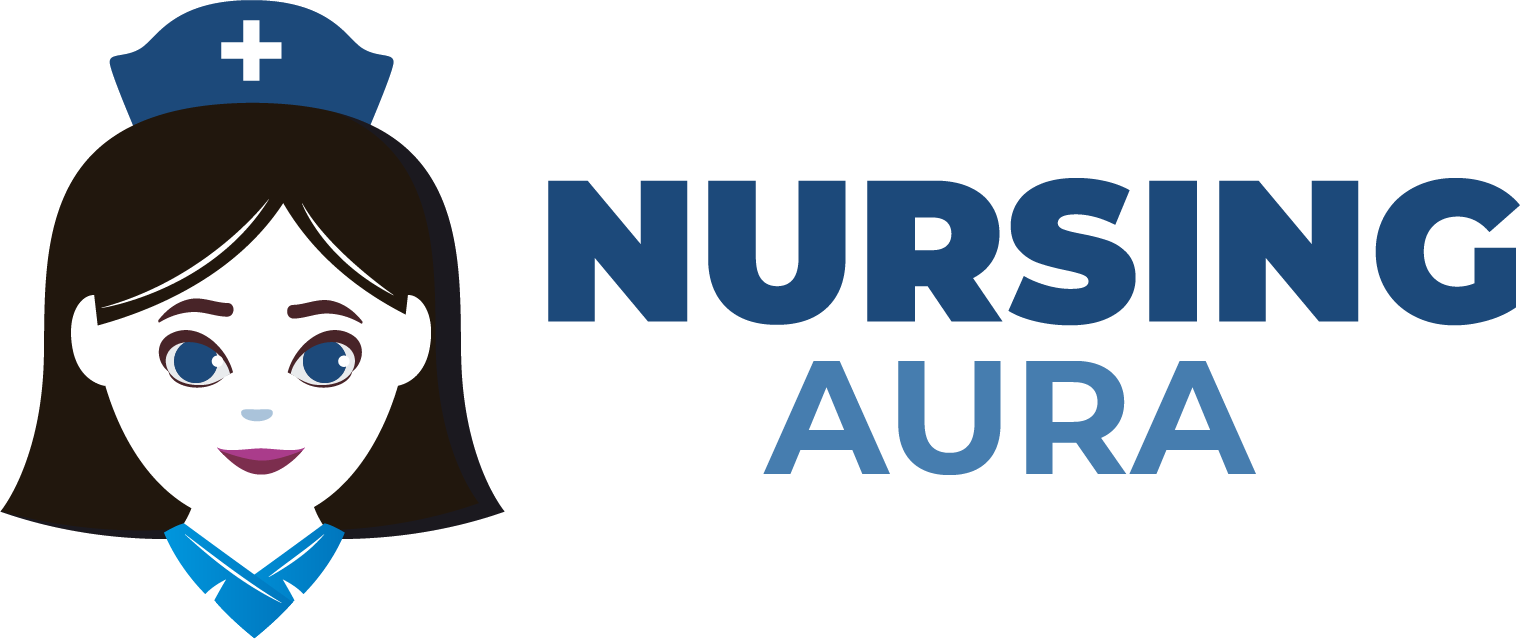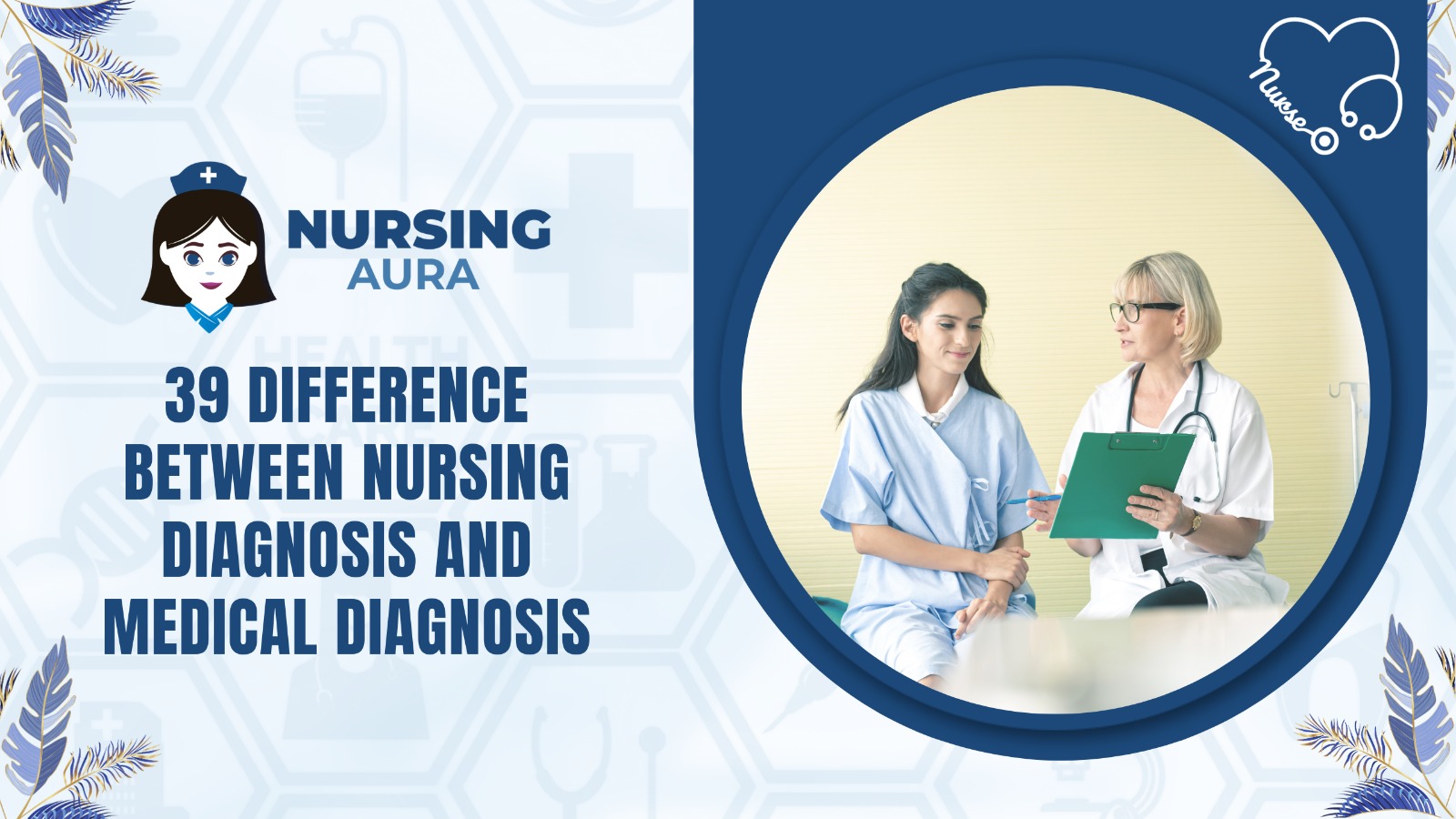Medical and nursing diagnoses are complimentary yet essential to patient treatment. Both identify health concerns, but their scope, goal, and implementation differ greatly.
Diagnose diseases, disorders, and medical conditions using signs, symptoms, medical history, and diagnostic testing. Doctors and medical professionals perform this. Finding a patient’s health issue’s cause guides medication, surgery, and other medical therapy selections. Disease diagnosis requires advanced medical equipment and expertise.
Diagnose diseases, disorders, and medical conditions using signs, symptoms, medical history, and diagnostic testing. Doctors and medical professionals perform this. Finding a patient’s health issue’s cause guides medication, surgery, and other medical therapy selections. Disease diagnosis requires advanced medical equipment and expertise.
The scope and goal of Nursing Diagnosis and Medical Diagnosis differ. The majority of medical diagnosis is done by doctors and other healthcare practitioners. Nursing Diagnosis considers the patient’s whole health, not simply medical disorders. It informs nurses’ interventions to improve patients’ comfort, well-being, and adaptability. Providing complete and patient-centered care requires medical diagnoses to treat the disease and nursing diagnoses to address the patient’s reaction. Together, these complementary methods provide the finest treatment personalized to each individual.
The 39 differences between Nursing Diagnosis and Medical Diagnosis:
| S.No. | Aspects | Nursing Diagnosis | Medical Diagnosis |
| 1 | Definition | Clinical judgment concerning a human response to health conditions or life processes. | Identification of a specific disease or medical condition based on clinical evaluation and diagnostic tests. |
| 2 | Purpose | Focuses on the patient’s response to illness and provides a basis for nursing care planning. | Identifies the specific disease or condition afflicting the patient’s body. |
| 3 | Made by | Made by nurses, particularly nurse practitioners or clinical nurses. | Typically made by physicians or other healthcare providers with medical degrees. |
| 4 | Scope | Concerned with the patient’s physical, emotional, social, and spiritual well-being. | Primarily addresses the patient’s physical health and disease pathology. |
| 5 | Assessment | Based on nursing assessment, including patient interviews, observations, and examination. | Requires comprehensive medical assessment, often involving diagnostic tests. |
| 6 | Language | Uses standardized nursing terminology (e.g., NANDA-I) to describe diagnoses. | Utilizes medical terminology to describe specific diseases or conditions. |
| 7 | Format | Written in a “problem-etiology-symptom” (PES) format or “related to/as evidenced by” (R/T/AEB) format. | Typically stated as a specific disease or medical condition (e.g., pneumonia, diabetes mellitus). |
| 8 | Focus on Etiology | Emphasizes identifying the underlying causes or contributing factors to the patient’s response. | Primarily focuses on the pathophysiology and etiology of the disease. |
| 9 | Holistic Approach | Considers the patient’s physical, psychological, sociocultural, and spiritual aspects. | Primarily focuses on the physical aspect of the patient’s health. |
| 10 | Goal | Aims to improve the patient’s overall well-being, quality of life, and response to health challenges. | Seeks to diagnose and treat the specific disease or condition causing symptoms. |
| 11 | Documentation | Documented in the nursing care plan and integrated into the patient’s care. | Documented in the patient’s medical record, guiding medical treatment. |
| 12 | Interventions | Guides nursing interventions and care strategies to address the patient’s response to illness. | Guides medical interventions, medications, and treatments to manage or cure the disease. |
| 13 | Collaborative Effort | Often involves collaboration with other healthcare providers in the care team. | Collaborative effort among healthcare providers, including physicians, nurses, and specialists. |
| 14 | Treatment Planning | Guides the development of nursing care plans tailored to the patient’s needs. | Guides medical treatment plans, including medications, surgeries, or therapies. |
| 15 | Reassessment | Periodically reassessed and modified based on the patient’s changing condition. | May require ongoing monitoring but less frequently modified once established. |
| 16 | Potential Complications | Addresses potential complications related to the patient’s response to illness. | Addresses potential complications arising from the disease or condition itself. |
| 17 | Evaluation | Assesses the effectiveness of nursing interventions and patient response to care. | Assesses the effectiveness of medical treatment in managing or curing the disease. |
| 18 | Examples | Examples include “Ineffective Breathing Pattern R/T respiratory infection AEB shortness of breath” | Examples include “Hypertension,” “Type 2 Diabetes,” or “Appendicitis.” |
| 19 | Treatment Goals | Goals focus on improving the patient’s comfort, safety, and overall health. | Goals aim to manage, cure, or alleviate the specific disease or condition. |
| 20 | Nursing Expertise | Requires expertise in nursing theory, assessment, and patient care planning. | Requires medical expertise, knowledge of disease pathophysiology, and diagnostic skills. |
| 21 | Patient-Centered Care | Emphasizes patient-centered care and tailoring interventions to the individual’s needs. | Centers on the diagnosis and treatment of the disease or condition itself. |
| 22 | Individualized Care Plans | Guides the development of individualized nursing care plans for each patient. | Provides the basis for individualized medical treatment plans. |
| 23 | Impact on Care Team | Guides nursing contributions to the care team’s overall efforts. | Serves as a foundation for medical decision-making within the care team. |
| 24 | Use in Teaching | Used in nursing education to teach students the nursing process and care planning. | Not typically used as a primary teaching tool in medical education. |
| 25 | Flexibility in Approach | Allows for a flexible approach to address the patient’s unique response to illness. | May follow standardized protocols for diagnosing specific diseases. |
| 26 | Change Over Time | Nursing diagnoses can change as the patient’s condition and response to care evolve. | Medical diagnoses may remain relatively stable over time, with adjustments as needed. |
| 27 | Emphasis on Symptoms | Focuses on the patient’s subjective and objective symptoms and their impact. | Focuses on identifying the specific disease or condition causing the symptoms. |
| 28 | Role in Nursing Care | Serves as a foundation for planning, implementing, and evaluating nursing care. | Influences medical decision-making, including treatment options and therapies. |
| 29 | Influence on Prescribing | Does not involve prescribing medications but may influence symptom management. | Often leads to the prescription of medications or medical interventions. |
| 30 | Duration of Use | Continuously used throughout a patient’s care to guide nursing interventions. | Typically established once during the diagnostic phase of care. |
| 31 | Therapeutic Relationship | Builds a therapeutic nurse-patient relationship focused on holistic care. | Aims to diagnose and treat the disease, with a focus on medical management. |
| 32 | Nursing Care Coordination | Guides the coordination of nursing care among team members. | Less involved in care coordination and more in diagnosis and treatment. |
| 33 | Tailoring of Interventions | Allows for individualized and patient-specific nursing interventions. | Medical treatments are often based on standardized protocols for specific diseases. |
| 34 | Addressing Patient’s Experience | Takes into account the patient’s perception and experience of illness. | Focuses on diagnosing the objective presence of disease or medical conditions. |
| 35 | Influence on Discharge Planning | Guides the development of a patient’s discharge plan and ongoing care. | May influence post-diagnosis treatment and follow-up care planning. |
| 36 | Role in Health Promotion | Plays a role in promoting health and well-being by addressing responses to illness. | Focuses on diagnosing and managing disease conditions; may include prevention strategies. |
| 37 | Patient Education | Incorporates patient education as part of nursing care planning. | May include patient education related to the specific medical condition. |
| 38 | Ethical Considerations | Considers ethical principles related to patient care, autonomy, and informed consent. | May involve ethical considerations regarding diagnostic accuracy and treatment options. |
| 39 | Interprofessional Collaboration | Encourages collaboration with healthcare providers from various disciplines. | Encourages collaboration but with a primary focus on medical professionals. |
Frequently Asked Questions (FAQs)
1. What is the main objective of a medical diagnosis, and who usually does it?
Medical diagnoses identify illnesses and medical disorders that impact patients. Doctors and specialists diagnose this. It guides medicine, surgery, and other medical decisions.
2. Who makes Nursing Diagnosis and what is their major focus?
Nursing diagnoses the patient’s complete reaction to health or life events. Central to patient care are nurses’ Nursing Diagnoses. These diagnoses examine the patient’s physical, emotional, social, and environmental characteristics and lead nursing actions to improve well-being.
3. Do nursing diagnoses replace medical diagnoses, or vice versa?
Medical and nursing diagnoses are different. They complement patient care in different ways. Medical diagnoses identify illnesses or medical problems, whereas nursing diagnoses analyze the patient’s reaction and guide nursing actions. Medical Diagnoses treat the sickness, whereas Nursing Diagnoses treat the patient’s overall health.
4. What information is frequently utilized in medical diagnosis?
Signs and symptoms, medical history, physical exams, and diagnostic testing including blood tests, imaging investigations, and biopsies help doctors diagnose patients. These criteria assist doctors in diagnosing a patient’s illness.
5. How can Nursing Diagnoses help patients, and what are some examples?
Nursing Diagnoses assist nurses in identifying and treating patient concerns that influence their health and everyday lives. Nurse diagnoses include “Acute Pain related to surgical incision,” “Anxiety related to a new diagnosis,” “Impaired Mobility due to a fractured leg,” and “Ineffective Coping due to a recent loss.” Nursing treatments and care plans increase patient comfort and quality of life based on this diagnosis.

